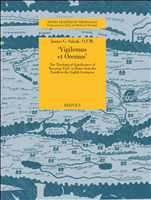2021 - Brepols
E-book
Versione Digitale
Download | Copia/incolla | Stampa
Vigilemus et Oremus : The Theological Significance of 'Keeping Vigil' in Rome From the Fourth to the Eighth Centuries
411 p.
- Christians have observed vigils in both East and West from earliest times. In the broad liturgical tradition of Christianity, the idea of keeping vigil appears to manifest the Church's eschatological nature. Documentary evidence from the earliest centuries reveals that some Christians kept a night watch at the graves of martyrs and other heroes of the faith as to anticipate that dawn when the rising Sun of Justice would return in fulfilment of his promise. Eventually, vigils appear not just for Easter, Pentecost and saints' days, but also for Christmas, the dedication of a church building, and on Saturday evening of the uniquely Roman quarterly Ember Weeks.Liturgical sources of the sixth, seventh, and eighth centuries reveal that such practices became relatively standardized with the assignment of specific Mass texts and scriptural readings, yet we know very little about the precise elements which comprised a vigil liturgy and of their theological significance. At the same time these vigils were so important.
- that they attracted to themselves the celebration of major sacramental liturgies during them. Hence, the Paschal Vigil, which existed for centuries as a vigil liturgy of scriptural readings and prayers gradually became the setting for the annual baptismal celebration. This book examines the nature of Roman vigil liturgies in the early centuries of Christianity to unravel the most primitive structure of keeping vigil and to provide a better understanding of the Paschal Vigil, which Augustine of Hippo affirms as the 'mother of all vigils.' [Publisher's text].
- Special access authorizations may apply; please contact us for further information.
-
Informazioni


